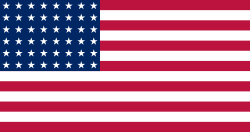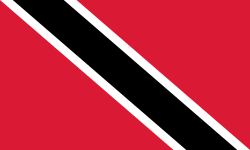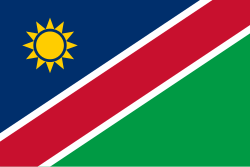Maurice Greene (friidrottare)
| Den här artikeln omfattas av Wikipedias policy om biografier. Den behöver fler källhänvisningar för att kunna verifieras. (2013-07) Åtgärda genom att lägga till pålitliga källor (gärna som fotnoter). Uppgifter utan källhänvisning kan ifrågasättas och tas bort utan att det behöver diskuteras på diskussionssidan. |
| Maurice Greene | ||
(c) Jimmy Harris, CC BY 2.0 Maurice Greene | ||
| Friidrott, herrar Nation: | ||
| Guld | Sydney 2000 | 100 meter |
| Guld | Sydney 2000 | 4 x 100 meter |
| Silver | Aten 2004 | 4 x 100 meter |
| Brons | Aten 2004 | 100 meter |
| Världsmästerskap | ||
| Guld | Edmonton 2001 | 100 meter |
| Guld | Sevilla 1999 | 100 meter |
| Guld | Sevilla 1999 | 200 meter |
| Guld | Sevilla 1999 | 4 x 100 meter |
| Guld | Aten 1997 | 100 meter |
Maurice Greene, född 23 juli 1974 i Kansas City, Kansas, USA, är en amerikansk före detta friidrottare.
Greene var 1990-talets och början av 2000-talets största stjärna på den manliga kortdistanslöpningen. Greenes första internationella mästerskap var VM 1995 i Göteborg där han blev utslagen redan i kvartsfinalen. Han misslyckades året efter att kvala in till de Olympiska sommarspelen 1996 i Atlanta. 1997 sprang han för första gången under 10 sekunder utomhus på 100 meter och samma år vann han sitt första VM-guld på 100 meter vid VM i Aten. Året efter slog han världsrekordet på 60 meter inomhus när han sprang på 6.39. Vid VM 1999 i Sevilla blev han historisk när han som förste man vann VM-guld på både 100 meter och 200 meter. Segertiden 9,80 på 100 meter var mästerskapsrekord fram till 2009, då detta slogs av Usain Bolts världsrekordlopp på 9,58.
Den 16 juni 1999 slog han även Donovan Baileys världsrekord på 100 meter när han sprang på 9,79, en tid som tangerade den rekordtid som Ben Johnson sprang på vid Olympiska sommarspelen 1988 men som senare ströks på grund av dopning. Greenes världsrekord stod sig till Asafa Powell 2005 sprang på 9,77. Däremellan hade Tim Montgomery sprungit på 9,78 men det rekordet ströks senare även detta på grund av dopning.
Greene deltog vid Olympiska sommarspelen 2000 i Sydney där han vann guld på 100 meter och guld i stafett på 4 x 100 meter. Vid världsmästerskapen 2001 tangerande han Carl Lewis bedrift då han vann sitt tredje raka guld på 100 meter.
VM 2003 i Paris blev ett misslyckande för Greene som blev utslagen redan i semifinalen. Han kom emellertid tillbaka till Olympiska sommarspelen 2004 i Aten där han blev bronsmedaljör på 100 meter, slagen av Justin Gatlin och Francis Obikwelu. Dessutom sprang han tredje sträckan i det amerikanska stafettlaget på 4 x 100 meter som slutade på andra plats, slaget med en hundradel av Storbritannien.
2008 meddelade Greene att han avslutade sin aktiva karriär.
Övrigt
Greene var, under en tid, den sprinter som (augusti 2007) presterat flest 100-meterslopp på en tid under 10,00 sek, vilket han har gjort 51 gånger[1].
Referenser
- Maurice Greene på World Athletics webbplats
- "All time men's best 100 m". Alltime-athletics.com.
Noter
| |||||||||||||
| |||||
| |||||
| |||||
Media som används på denna webbplats
Författare/Upphovsman: Tkgd2007, Licens: CC BY-SA 3.0
A new incarnation of Image:Question_book-3.svg, which was uploaded by user AzaToth. This file is available on the English version of Wikipedia under the filename en:Image:Question book-new.svg
De olympiska ringarna, med genomskinlig bakgrund.
US Flag with 45 stars. In use 4 July 1896–3 July 1908. Created by jacobolus using Adobe Illustrator, and released into the public domain. This flag was used during the Spanish-American War.
US Flag with 45 stars. In use 4 July 1896–3 July 1908. Created by jacobolus using Adobe Illustrator, and released into the public domain. This flag was used during the Spanish-American War.
US Flag with 48 stars. In use for 47 years from July 4, 1912, to July 3, 1959.
The Canadian Red Ensign used between 1921 and 1957.
This image has compared for accuracy (mainly colors) using an image from World Statesmen. The only change is making the maple leaves green from red. This image has compared for accuracy (mainly colors) using an image from World Statesmen. The most recent version of this image has changed the harp into one with a female figure; see [http://flagspot.net/flags/ca-1921.html FOTW
The Canadian Red Ensign used between 1921 and 1957.
This image has compared for accuracy (mainly colors) using an image from World Statesmen. The only change is making the maple leaves green from red. This image has compared for accuracy (mainly colors) using an image from World Statesmen. The most recent version of this image has changed the harp into one with a female figure; see [http://flagspot.net/flags/ca-1921.html FOTW
Flag of the unified Team of Germany for the Olympic Games, 1960–1968.
Trinidad och Tobagos flagga
Flag of Jamaica. “The sunshine, the land is green, and the people are strong and bold” is the symbolism of the colours of the flag. GOLD represents the natural wealth and beauty of sunlight; GREEN represents hope and agricultural resources; BLACK represents the strength and creativity of the people. The original symbolism, however, was "Hardships there are, but the land is green, and the sun shineth", where BLACK represented the hardships being faced.
Flag of Namibia
US Flag with 44 stars. In use 4 July 1891–3 July 1896. Created by jacobolus using Adobe Illustrator, and released into the public domain.



















